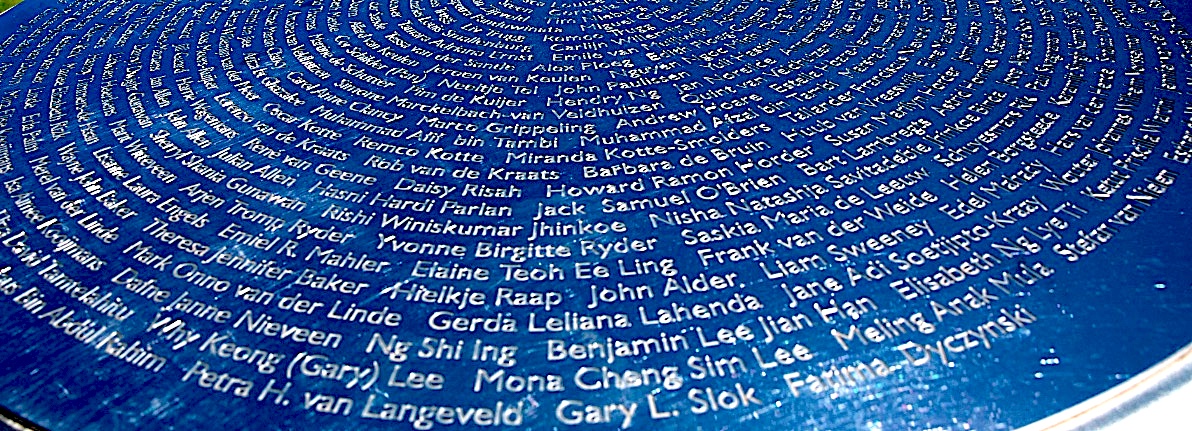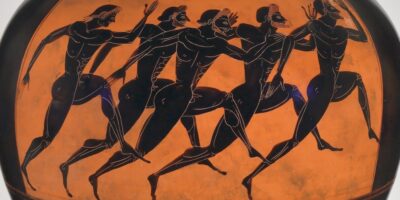Ten years ago last Wednesday, July 17, a Russian BUK missile launched by Russian-backed rebels shot down Malaysia Airlines Flight MH17 over Ukraine killing 298 passengers and crew. Including 80 children.
The pain, loss, confusion and anger felt by families and friends, especially of the 196 Dutch victims, was shared with the broader Dutch public through four gripping and somber television documentaries this week. Viewers heard both former and current Dutch prime ministers, Mark Rutte and Dick Schoof, the then National Coordinator for Security and Counterterrorism, describe the intensive diplomatic activities behind the scenes to allow recovery and investigative teams into the vulnerable war-zone.
Local Ukrainians described the traumatic experience of witnessing the sight of human bodies and body parts raining down nearby in fields of corn and sunflowers, in Ukraine’s eastern Donetsk region.
Next to the Netherlands, victims came from fourteen nationalities: Malaysia, Indonesia, the United Kingdom, Belgium, Germany, the Philippines, Canada, New Zealand, Vietnam, Israel, Italy, Romania, the United States and South Africa.
A vast and complex international operation saw almost all the human remains recovered and repatriated for the painstaking and heart-rending task of collating the body parts. Enough aircraft fragments were salvaged and returned to the Netherlands to reconstruct the shell of the Boeing 777, essential for the legal investigation.
While the European Court of Human Rights is still hearing the case, a Dutch court in 2022 found clear evidence that the plane was shot down by a Russian missile system and that Moscow had “overall control” of the forces of the separatist “Donetsk People’s Republic” in eastern Ukraine from May 2014. Two Russians and one pro-Russian Ukrainian were sentenced in abstentia to life imprisonment for multiple murders.
Initially blaming Ukraine for the downing, the Kremlin continues to deny any responsibility and refuses to cooperate with the international investigation, preventing those responsible from being brought to justice.
July 17, 2014, was the Dutch 9/11. More Dutch were killed on that day per head of population than Americans on 9/11. Now embedded in the collective memory of a nation largely unscathed by war, terrorism or natural disasters in recent generations, the tragedy prompted the first national day of mourning since the 1960’s, and is commemorated annually on July 17.
Monument
A National Monument MH17 has been created just west of Schiphol Airport, where the aircraft had taken off for Kuala Lumpur. The monument site is ringed by a memorial forest of 298 trees, one for each victim, planted in the form of a green commemorative ribbon. A ring of sunflowers fringe the trees and radiate a golden glow in July when in bloom, a reminder of those sunflower fields in eastern Ukraine.
Centre piece of the memorial is a polished metal flying-saucer shape engraved with the names of all the victims. Individual names are also found on plaques on each tree, and a small army of volunteers swarms over the site each Monday to polish the plaques, mow the grass and clip the edges.
On Wednesday, a nationally-televised commemoration service was held with 1500 present, including family members, King Willem-Alexander, Mark Rutte, Dick Schoof and representatives from the nations of other victims. Family by family, relatives came forward to read the names in an emotional half-hour, ending in a two-minute silence.
And yet…
Tragic as these deaths have been, the downing of MH17 was a portent of worse things to come. Casualty figures of those killed or wounded on both the Ukrainian and Russian sides since the invasion simply dwarf those 298 inscribed names.
On the second anniversary of the Russian invasion five months ago, President Zelenkskyy confirmed 31,000 Ukrainian soldiers had been killed to date in the conflict. US estimates are over double that figure.
Instinctively we want to avoid thinking about the implications of such numbers. Yet we should pause to contemplate the devastating impact on the lives of thousands, actually millions, of Ukrainian wives, husbands, children, parents, relatives and friends. Once when visiting Kyiv I saw on the wall of St Michael’s Monastery thousands of photos of soldiers fallen on the east front, each representing a network of heart-broken loved ones.
Worse still are the Russian casualties. The first year of the Ukraine war was 35 times deadlier than Afghanistan. Casualties are disproportionately from regions furthest from Moscow. In the last two months alone, some 70,000 Russian soldiers have been reported killed – 1000 per day! In callous disregard for the lives of their own citizens, authorities are deploying barbaric ‘meat grinder’ tactics, launching massive World War One-style infantry assaults to overwhelm the defence by sheer numbers.
All of which spotlights the obscenity of politicians, on both sides of the Atlantic, calling to stop support for Ukraine under the false cloak of peace.
Till next week,



